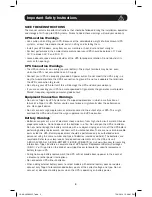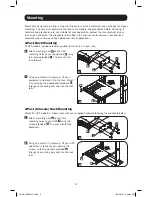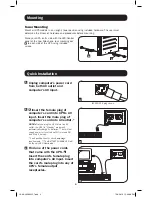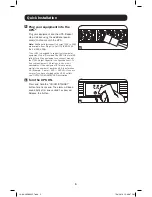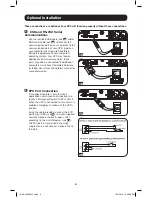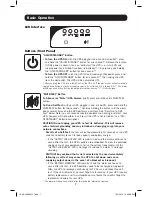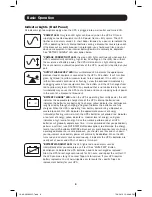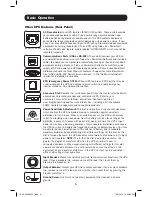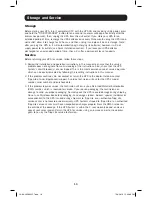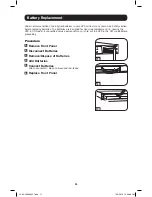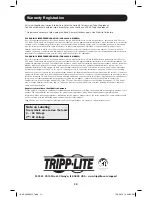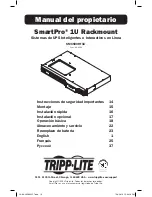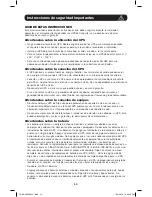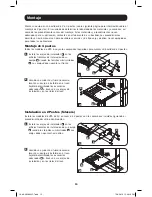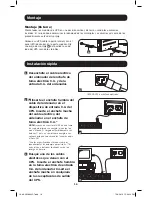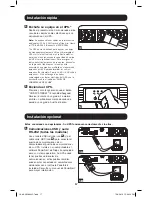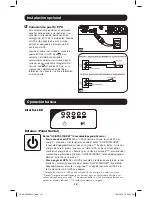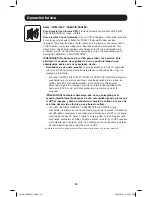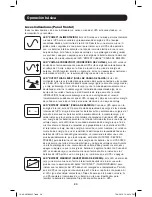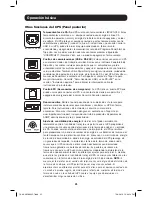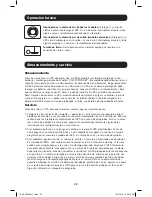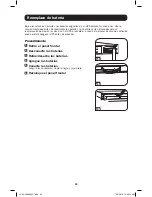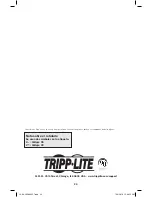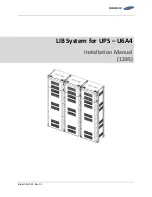
9
Basic Operation
Other UPS Features (Rear Panel)
IEC320-C13/230V
AC Receptacles:
Your UPS features IEC320-C13 outlets. These outlets provide
your connected equipment with AC line power during normal operation and
battery power during blackouts and brownouts. The UPS protects equipment
connected to these receptacles against damaging surges and line noise. If you
have a serial or USB connection to your UPS, you can remotely reboot connected
equipment by turning receptacles OFF and ON using Tripp Lite’s PowerAlert
software. Models also feature outlets labeled “UNSWITCHED” which may not be
remotely turned off.
Communications Ports (USB or RS-232):
These ports connect your UPS to
any workstation or server. Use with Tripp Lite’s PowerAlert Software and included
cables to enable your computer to automatically save open files and shut down
equipment during a blackout. Also use PowerAlert Software to monitor a wide
variety of AC line power and UPS operating conditions. Consult your PowerAlert
Software manual or contact Tripp Lite Customer Support for more information.
See “USB and RS-232 Serial Communications” in the “Optional Installation”
section for installation instructions.
EPO (Emergency Power Off) Port:
Your UPS features a EPO port that may be
used to connect the UPS to a contact closure switch to enable emergency
inverter shutdown. See Optional Connection.
Accessory Slot:
Remove the small cover panel from this slot to install optional
accessories to remotely monitor and control your UPS. Refer to your
accessory’s manual for installation instructions. Contact Tripp Lite at
www.tripplite.com/support for more information, including a list of available
SNMP, network management and connectivity products.
Power Sensitivity Adjustment:
This dial is normally set fully counter-clockwise,
which enables the UPS to provide maximum protection against waveform
distortions in its AC input. When such distortion occurs, the UPS will normally
switch to providing sine wave power from its battery reserves for as long as the
distortion is present. In areas with poor utility power or where the UPS’s input
power comes from a backup generator, chronic waveform distortion could cause
the UPS to switch to battery too frequently, draining its battery reserves. You may
be able to reduce how often your UPS switches to battery due to moderate
waveform distortion by experimenting with different settings for this dial. As the
dial is turned clockwise, the UPS becomes more tolerant of variations in its input
power’s AC waveform.
NOTE:
The further the dial is adjusted clockwise, the
greater the degree of waveform distortion the UPS will allow to pass to
connected equipment. When experimenting with different settings for this dial,
operate connected equipment in a safe test mode so that the effect on the
equipment of any waveform distortions in the UPS’s output can be evaluated
without disrupting critical operations.
Input Breaker:
Protect your electrical circuit from overcurrent draw from the UPS
load. If these breakers trip, remove some of the load; then reset them by
pressing the breaker(s) in.
Output Breaker:
Protect your UPS from output overload. If one or more breakers
trip, remove some of the load on the circuit(s), then reset them by pressing the
breaker switch(es) in.
Ground Screw:
Use this to connect any equipment that requires a chassis
ground.
13-06-205-9332C7.indb 9
7/16/2013 12:39:08 PM


